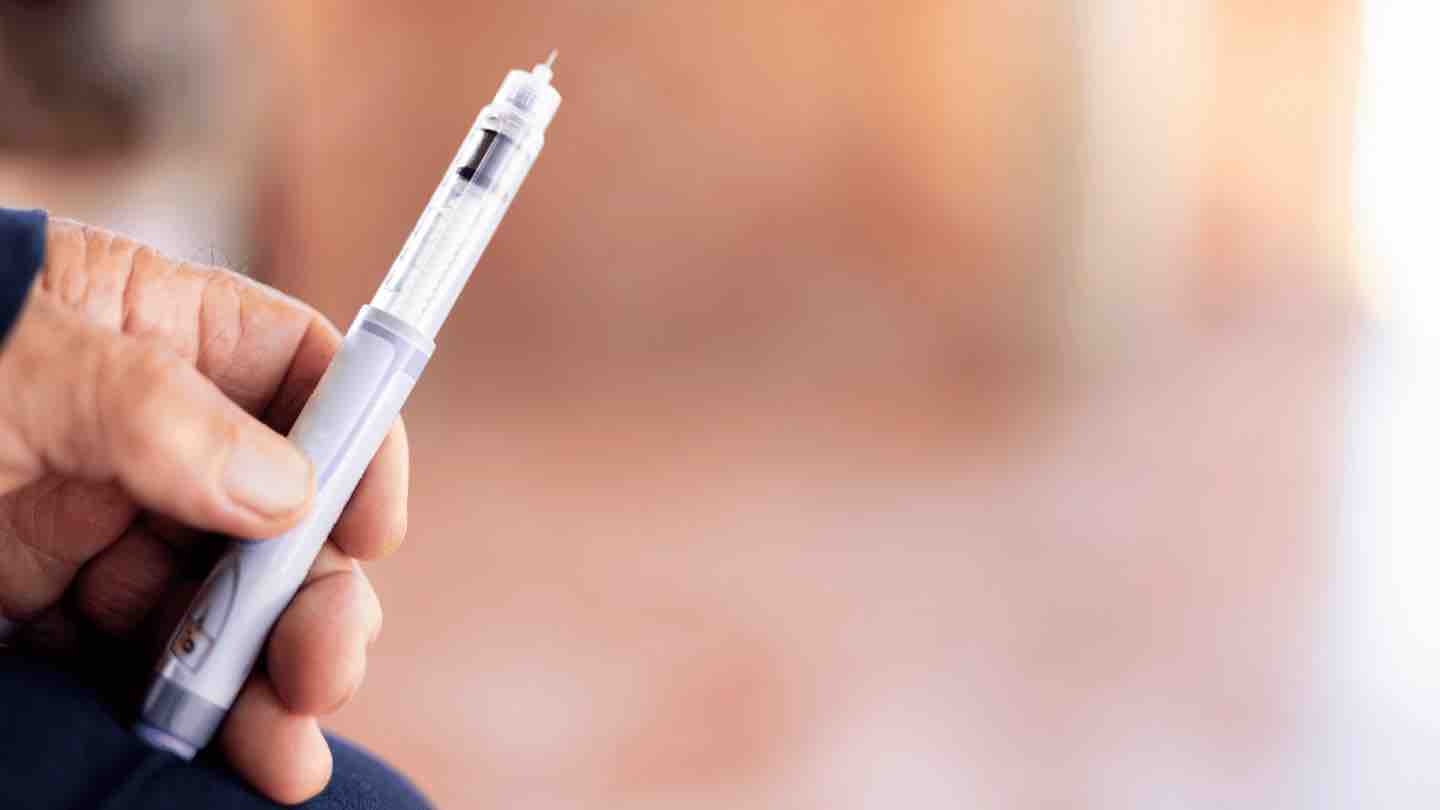What Does Having Type 2 Diabetes Mean?
Having Type 2 Diabetes means that your body has become insulin resistant. Typically, your pancreas produces insulin to help move glucose (a form of sugar) from your blood to your cells for energy.
However, with type 2 diabetes, your pancreas does not produce enough insulin, or your body cells do not effectively respond to it. This causes too much sugar to keep circulating in your bloodstream, leading to serious health problems such as stroke, heart disease, or even death.
What Causes Type 2 Diabetes

Type 2 Diabetes is caused because of two interrelated issues:
- The cells of your muscles, fat, and liver do not respond to insulin any longer, and as a result, cannot absorb and utilize glucose.
- The pancreas produces an insufficient amount of insulin to control blood sugar levels.
The Role of Glucose
Glucose is a type of sugar you get from the food you eat or your liver. Your body uses glucose as a main source of energy.
It is also called blood glucose or blood sugar since it travels through the bloodstream to enter cells to provide energy.
In type 2 diabetes, glucose builds up in the blood instead of being taken up by your body’s cells.
The Role of Insulin
Insulin is a hormone produced by the pancreas’s beta cells.
Whenever sugar is present in the bloodstream, it triggers the pancreas to secrete insulin. The circulating insulin in the bloodstream allows sugar to enter your body’s cells, which causes a drop in blood sugar levels.
The pancreas then releases less insulin.
In Type 2 diabetes, the continuous rise in blood sugar levels causes the insulin-producing beta cells in the pancreas to produce more insulin to keep up with the demands.
Over time, these cells deteriorate and cannot produce enough insulin to satisfy the body’s needs.
Book your diabetes check-up now.
Schedule Your Appointment Today.
Type 2 Diabetes Risk Factors

A combination of factors may cause Type 2 Diabetes:
- Overweight or Obesity – Insulin resistance’s main risk is caused by being overweight or obese.
- Fat distribution – Excess weight around the midsection indicates a higher risk of developing Type 2 Diabetes. A waist measurement of 40 inches or more for males or 35 inches or more for women increases your risk of developing type 2 diabetes.
- Age – Type 2 diabetes can occur at any age, even in childhood. However, it mainly occurs in people who are middle-aged and older.
- Metabolic syndrome – High blood sugar, excess belly fat, high blood pressure, high cholesterol, and high triglycerides are a few conditions people with insulin resistance frequently experience.
- Ethnicity – African Americans, Hispanic/Latinos, American Indians, Asian Americans, and Pacific Islanders are more likely to have diabetes than other racial or ethnic groups.
- Family background – If your parent or sibling has type 2 diabetes, your risk of developing it also rises.
- Physical Inactivity – Your risk increases the less active you are. Exercise aids in weight management, burns glucose as fuel, and increases insulin sensitivity in your cells.
- Polycystic ovarian syndrome – Diabetes is more likely prevalent in those with polycystic ovarian syndrome, a prevalent disorder marked by irregular menstrual cycles, excessive hair growth, and obesity.
- Pregnancy-related risks – If you had gestational diabetes while pregnant or had a baby that weighed more than 4 Kgs, your chance of getting type 2 diabetes is higher.
- Prediabetes – When your blood sugar level is above normal but not high enough to be diagnosed as diabetes, you have prediabetes. Prediabetes frequently develops into type 2 diabetes if left untreated.
What Are Some of the Symptoms?

Type 2 diabetes symptoms can be so subtle that you don’t notice them.
These symptoms include the following:
- Increased hunger
- Excessive thirst
- Fatigue
- Frequent urination
- Unintended weight loss
- Blurry vision
- Slow-healing sores
- Pain, tingling, or numbness in your hands or feet
- Frequent infections
- Areas of darkened skin, usually in the armpits and neck
- Yeast infections that keep returning
What Happens When You Have Type 2 Diabetes?

There are short- and long-term complications with type 2 diabetes if you don’t work hard to control your blood glucose levels.
It can affect major organs such as the heart, kidneys, eyes, nerves, and blood vessels.
Possible complications include
Eye problems – Diabetic retinopathy is an eye condition that some people with diabetes develop, which can impair vision. Diabetes also raises the risk of major eye conditions such as cataracts and glaucoma.
Heart attack and stroke – High blood sugar levels over an extended time can harm your blood vessels if you have diabetes, resulting in heart attacks and strokes.
Nerve damage – Some people with diabetes may experience nerve damage (neuropathy) due to problems from high blood sugar levels.
This may make it more difficult for the nerves to transmit signals from the brain to every region of our body, which may impact our ability to see, hear, feel, and move.
Nerve damage can also occur in the heart’s nerves leading to heart rhythm irregularities. Digestive system nerve injury can result in issues with nausea, vomiting, diarrhea, or constipation. In men, erectile dysfunction may result from nerve injury.
Kidney disease – Diabetes can cause chronic renal disease or irreversible end-stage kidney disease, which may require kidney transplantation or dialysis.
Hearing problems – People with diabetes commonly experience hearing impairment.
Foot problems – Major foot complications from diabetes can result in amputation if left untreated. Your feet’s sense of touch may be impacted by nerve damage, and high blood sugar levels may harm your circulation, slowing the healing of cuts and sores.
How Do You Test For Type 2 Diabetes?
The following blood tests are used to diagnose Type 2 Diabetes:
- Fasting plasma glucose test: Measures your blood sugar after an eight-hour fast.
- Random plasma glucose test: No fasting is required for this lab test to be performed.
- Glycated hemoglobin test (A1c): Calculates your average blood sugar levels over the past two or three months.
- Oral glucose tolerance (OGTT): Measures your blood sugar levels before and two hours after consuming sugary beverages to determine how your body processes the sugar.
Book your diabetes check-up now.
Schedule Your Appointment Today.
What Are The Treatment Options?

Diabetes can be managed and sometimes reversed with a combination of medication and lifestyle modifications.
Lifestyle changes include following a healthy diet, losing weight if you are overweight or obese, exercising more, limiting alcohol consumption, and quitting smoking.
Your doctor may prescribe the following medications if your blood sugar levels don’t improve with lifestyle changes
- Metformin – This can improve how your body reacts to insulin and lower your blood sugar levels. It is usually used as the first line of medication.
- Meglitinides – These drugs stimulate your pancreas to release more insulin and are fast-acting.
- Sulfonylureas – This group of medicines helps your body make more insulin.
- Thiazolidinediones – These make your body more sensitive to insulin.
- Dipeptidyl peptidase 4 (DPP-4) inhibitors – These help lower blood sugar levels.
- Insulin – A long-lasting insulin shot may be administered at night, including insulin detemir (Levemir) or insulin glargine (Lantus).
- Sodium-glucose Cotransporter-2 (SGLT2) Inhibitors – These aid the kidneys in the removal of sugar from your body through urine.
Are There Ways To Prevent Getting Type 2 Diabetes?
Type 2 Diabetes can be prevented by adopting a healthy lifestyle, which includes
- Eating healthy
- Having regular physical activity
- Maintaining a healthy weight
You can prevent, delay or manage diabetes by working with your healthcare provider.
You can live a healthier and more regular life by being more knowledgeable about diabetes, developing an action plan, and following that plan, which includes lifestyle changes, monitoring blood glucose levels, and taking any prescribed medications.
You can schedule an appointment online or call to schedule your appointment for same day appointment with a primary care doctor in Riverview to seek help regarding your Type 2 diabetes.
References
- Smushkin, G., & Vella, A. (2010). What is type 2 diabetes?. Medicine (Abingdon, England : UK ed.), 38(11), 597–601. https://doi.org/10.1016/j.mpmed.2010.08.008
- Chatterjee, S., Khunti, K., & Davies, M. J. (2017). Type 2 diabetes. The Lancet, 389(10085), 2239–2251. doi:10.1016/s0140-6736(17)30058-2
- Classification and diagnosis of diabetes: Standards of medical care in diabetes. (2018). care.diabetesjournals.org/content/41/Supplement_1/S13
- Diabetes [Fact sheet]. (2018). who.int/en/news-room/fact-sheets/detail/diabetes
- Preventing type 2 diabetes. (2016). niddk.nih.gov/health-information/diabetes/overview/preventing-type-2-diabetes
- What causes type 2 diabetes. (2021). cdc.gov/diabetes/library/features/diabetes-causes.html
